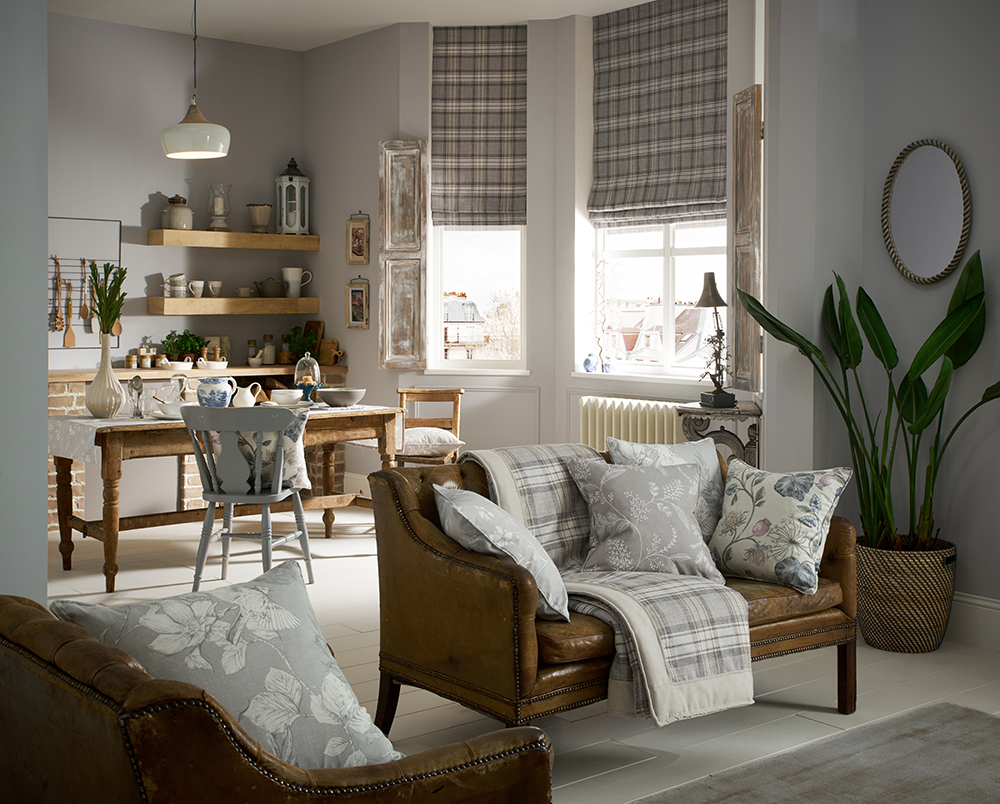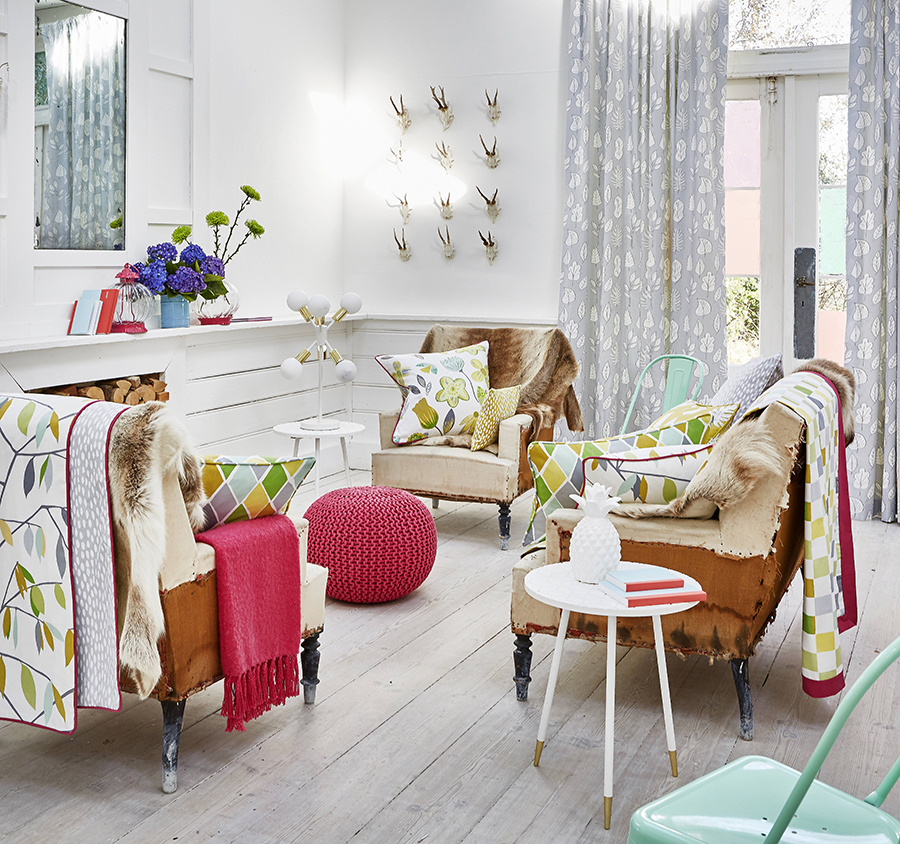
Top Tips For Buying Window Dressings
Your window treatment may be the final element in your newly decorated room, but that doesn’t mean it should be an afterthought.
Windows are an important focal point of a room, so the dressings you choose should be aesthetically pleasing as well as functional. Fortunately, the wide choice of styles and colours available on the market nowadays means that it’s relatively easy to discover the right blind, curtain or shutter for your space. We want to help you on your window dressing journey by offering our top tips. Read on to find out more!
Top Tips For Buying Window Dressings
Curtains and blinds complete an interior, tying together the patterns and textures of a room whilst offering privacy, light control and thermal benefits. Whether for your master bedroom, living room, kitchen or bathroom, your window dressings are highly functional products that deserve careful consideration. Here are the questions you should be asking yourself…
1. How much light or darkness is required?
Bedrooms in particular require a higher level of darkness, so if you’re shopping for window dressings for this area of the home, consider thick heavy fabrics and blackout linings. On the flip side, an area of the home that would benefit from gentle light filtering may be more suited to sheer voiles, venetian blinds or a roller blind in transparent fabric. Think about the location of windows in your home, too. In terms of sunshine, an east-facing bedroom will suffer from early morning wakeup calls, while a south-facing living room will receive enjoyable sunshine throughout the day. The style and fabric of your blind or curtain should always be selected with light and darkness in mind.

2. Is my room humid or prone to moisture?
Kitchens and bathrooms are prone to moisture, so your window dressings should be water resistant and easy to maintain. Avoid natural fabrics like silk and linen for your soft window dressings, which are likely to fade and deteriorate in moist conditions. If you’re very keen for roller blinds then consider a water-resistant style, and if you’ve got your heart set on curtains or Roman blinds, we aware that they’ll need cleaning regularly. You should also consider a faux alternative if you want the look of wooden blinds, as this alternative won’t warp and twist. Metal, PVC and polyester are excellent solutions for these spaces, because they’ve been carefully constructed to withstand harsh conditions. However, in rooms where you needn’t worry about water damage, you can embrace natural materials, which will offer a softer look. This works particularly well in large bathrooms and country-cottage kitchens.
3. Is my room overlooked?
Many of us live in busy urban areas where pedestrians and traffic regularly pass windows. Others own homes that are overlooked by neighbours. One way to manage your privacy is to install effective window dressings, which obscure the views from outside whilst allowing light and fresh air to circulate. The best blinds for the job are vertical blinds, the only window blinds that prevent views from the left and right (venetian styles only block views from above and below, depending on the way you arrange them). If you’re concerned that this style won’t look soft and stylish enough for your space, consider pairing with a set of curtains.
4. What is my budget?
Undoubtedly the most important deciding factor when purchasing new window treatments is the price. Blinds and curtains vary tremendously in cost, with the cheapest available for the smallest of windows from as little as £10, which then ranges up to the hundreds (and even thousands for the most luxurious designer brands!). Carefully consider your budget before you start shopping, and always keep an eye out for end of season sales. Most good suppliers offer cost-effective window dressings along with higher-end styles, so you should be able to find the right price for you and your home. Curtains and shutters are generally the more costly products, whilst roller blinds and faux wood blinds come in at lower prices. And of course, the larger the product you require, the higher the price.
5. How much maintenance can I commit to?
Most blinds can be cleaned easily. However, some styles do require more frequent attention, and even professional intervention. Wooden blinds and venetian blinds should be dusted from time to time – the slats are magnets for dust! Curtains and Roman blinds can be cleaned with a vacuum, but if a heavy stain has set in, they will need to be removed from the window and washed carefully, or ideally dry-cleaned if the fabric is delicate. Roller blinds can be wiped clean, and if they’re PVC, even better! Vertical blinds offer the benefit of slat replacement as and when required, which is always worth bearing in mind. With all of this being said, you should always consider the ease of maintenance of your window treatments before purchasing them, and the amount of time and effort you can dedicate to cleaning them.
6. Are safety features very important?

The safety and security of your window dressings is always important, but it’s particularly significant if you have small children and pets. All blinds should be provided with safety devices that keep cords and chains fastened safely out of reach, but it’s also worth thinking about the location of furniture near your blinds – children and animals love to climb, after all! Cordless blinds are also available, ridding the need for cords completely. Curtains, obviously, come without this problem, while certain types of roller blinds, including skylight blinds, can be raised and lowered by hand.
7. Do I need to consider insulation and energy saving?
Everyone would love to save a bit of money on energy bills, but some households are particularly focused on energy efficiency. If you’re keen to help the environment as much as possible (whilst also helping your bank account), thermal blinds are an excellent option. Installing these insulating blinds will help to conserve energy whilst also filtering the light effectively, so you’ll be less likely to crank up the thermostat. Sheer and thin fabrics are less effective in terms of thermal efficiency, so try to avoid these if insulation is a motivating factor.
8. What is my personal interior style?
Finally, the look and feel of your window dressings is always worth considering. New curtains and blinds are a considerable investment, so you need to select a product that’s right for you and your home. Consider the type of look you want to go for. Is the space formal or relaxed? Do you want to channel cosiness or freshness? Will bright colours and bold patterns work well, or do you prefer something simple and subtle? Maybe you’d prefer a heavily textured fabric that’ll bring warmth, or are you a fan of light airy materials that have a soft and feminine appeal? Once you’ve established your personal interior style, you can choose a window treatment that complements.
Want to know more about the best window dressings for you? Explore our collection and remember to take advantage of our FREE Interior Design Service by contacting our Interior Design Specialists directly: [email protected] or 01924 848739 (8:30-4:30 MON-FRI)







